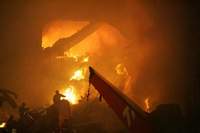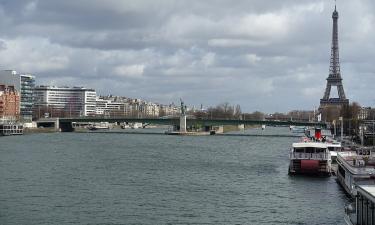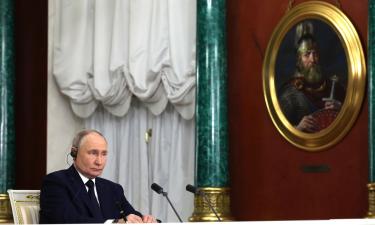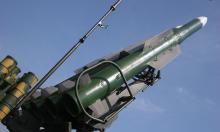Investigation of Brazilian plane crash reveals more details
One of the two thrust reversers on an airliner carrying 186 people that crashed in a fireball was turned off when the plane landed, the jet's owner said, as officials tried to determine why it raced down a runway instead of slowing down.

The airline TAM, however, said late Thursday that the thrust reverser used to slow jets after they touch down had been deactivated earlier in accordance with proper procedures and planes in such condition are considered safe to fly.
Brazil's Globo TV reported earlier Thursday that an unidentified problem in the Airbus-320's right thrust reverser emerged four days before the crash and was under investigation by authorities.
TAM did not provide details about the problem, but issued a statement that that government-approved maintenance rules allow planes with that problem to fly, though they must be inspected within 10 days.
All of the 186 people aboard the TAM Linhas Aereas SA jet are presumed dead, and at least three people died on the ground after it slammed into a building owned by the airline on Tuesday, causing explosions and a fire that was still smoldering two days later.
President Luiz Inacio Lula da Silva is expected to finally address Brazil's deadliest air tragedy in a televised speech to the nation Friday night.
Silva's administration has come under fire for failing to deal with glaring air travel safety problems, but his only comment since the plane exploded Tuesday night was a brief statement of condolences issued hours later.
One of Silva's top aides came under heavy criticism Friday after Globo TV captured him on video using an obscene gesture, apparently reacting in relief while watching a television report about the thrust reverser.
Brazilian media and opposition politicians said the gesture showed Marco Aurelio Garcia must have been pleased about the report indicating a mechanical problem may have been involved in the crash - because that would shift blame away from the government.
Garcia denied the claim and complained that the nation's biggest television network filmed him through the window of his office in the presidential palace in Brasilia
The president, who gives frequent and lengthy addresses, has been holed up in the capital since the crash, huddling with advisers and canceling public appearances.
"Where is the president who loves to give speeches?" political commentator Lucia Hippolito asked.
Silva even got upstaged at the crash site itself when political opponent Jose Serra toured the scene shortly after the crash at Sao Paulo's domestic airport.
Serra, Sao Paulo's state governor, lost the presidential race in 2002 that made Silva Brazil's first working-class president.
As prosecutors sought Thursday to close the airport where the crash happened amid claims its short runway was a factor in the accident, critics blamed Silva for failing to solve problems ranging from an underfunded airtraffic control system to deficient radars and investment in airport infrastructure.
The opposition Social Democratic Party complained in a statement that Silva "hasn't appeared publicly to express his sorrow, or to give solidarity to the families of the victims and explain what measures are being taken" to prevent similar accidents.
Congressman Marco Maia of Silva's Workers Party said the nation's air travel crisis "surpassed its limit" with the crash. "The head of state has the responsibility to identify solutions to overcome this crisis," Maia said.
Meanwhile, authorities struggled to determine why the TAM jet raced down the runway after landing instead of slowing down just before it was blown apart in a series of explosions.
Airport video showed TAM Flight 3054 from Porto Alegre speeding on the rain-slicked tarmac more than four times as fast as planes landing around the same time, raising the possibility of pilot or mechanical error.
The Airbus-320 then appeared to take off again and flew just above cars in rush hour traffic before slamming into a building.
Brig. Jose Carlos Pereira, president of the national airport authority Infraero, said authorities must wait for an analysis of the black box to explain why the jet was going so fast.
"For some reason, the plane did not slow down," he said. "Something happened and the pilot, for some reason, accelerated the plane."
Brazilian aviation consultant Elias Gedeon said it was too early to assign blame: "The bottom line is we don't know what happened. Why was he going so fast? He couldn't stop? Was it the water on the runway? Was it his ability? We don't know."
Almost all airliners are equipped with thrust reversers that redirect the engines' jet blast forward to help slow them after touchdown.
While thrust reversers on twin-engine airliners such as the Airbus 320 are supposed to work in tandem, it's not unusual for only one to be deployed if the other is unserviceable.
The Congonhas airport recently resurfaced its runway to provide better braking in rainy conditions. But the new surface hadn't dried enough to cut deep grooves into the tarmac that allow water to run off the runway and provide increased grip. Several airplanes slid off the runway after the resurfacing was done and before Tuesday's crash.
Federal prosecutors are seeking an injunction to close Congonhas until the investigation is over, a process expected to take months. If a judge approves the move, it would cause air travel chaos throughout Brazil and severe financial repercussions for airlines.
By late Thursday, 188 bodies had been retrieved, but forensic examiners had identified only 25.
In September, 154 people were killed when a a Gol Airlines Boeing 737 collided with a small jet over the Amazon rainforest. That crash had been the country's deadliest.
Subscribe to Pravda.Ru Telegram channel, Facebook, RSS!




